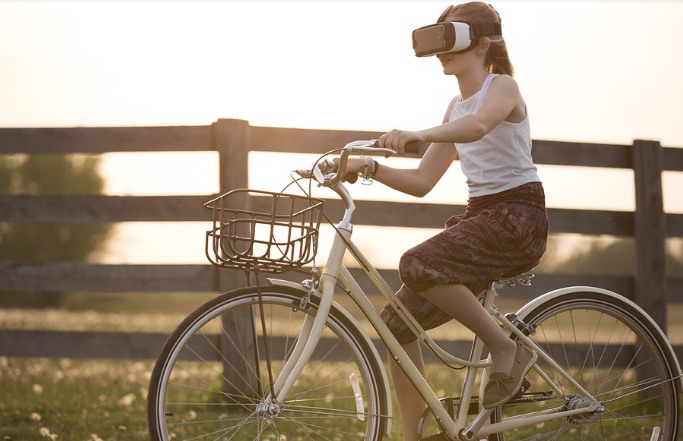The exercise bike provides a fantastic cardio workout that is typically soft and smooth, but it can also be very demanding, especially when the pedaling resistance is set at a very high level, and then have a significant impact on your calves and leg muscles, thighs, and buttocks. Cycling also develops well-defined muscles because it requires a steady effort without jerks to ride a stationary bike. In order to get a lean body, tone your legs, and lose weight, it is therefore ideal. We’ll go over which exercises are more effective for gaining muscle and burning calories, as well as how the muscles in a stationary bike work.
What Muscles Does Biking Work?
The exercise bike first and foremost strengthens your heart, the most significant muscle in your body! Additionally, using a stationary bike increases your endurance and stamina and is a great sport for weight loss. If you want to shape your body, the exercise bike can help you increase your muscle mass and focus on particular body parts. You can select and adjust how hard you want to work your muscles on the stationary bike, which is a benefit. Your muscles are worked harder and gain mass as you increase the bike’s pedaling resistance.
According to Melissa Sebastian, Trek Bikes’ health and wellness coordinator, your quads, hamstrings, glutes, and calf muscles are the main muscles used during biking, as you might expect. When performed correctly, each pedal rotation consists of a push (when the knee extends) and a pull (when the knee bends upward). She claims that in addition to the muscles in your calves, all the quadriceps muscles are used when you press down on the pedal. “Then as you pull back and up, your hamstring glutes, and shin muscles get activated,” she says.
You should consider the surface you’re riding on. Compared to flat land, riding up a hill puts more strain on the quadriceps and calves, according to Sebastian. According to her, your legs typically work a little less when you’re going downhill because momentum, rather than your muscles, usually propels you forward. On a stationary bike you can’t climb literal hills, but you can crank up the resistance to mimic an uphill course, or release it to recreate a downhill coast.
What Additional Advantages Do Bicycles Offer?
There’s no denying that getting on a bike will increase your strength and muscle mass, but cycling has other advantages as well.
According to Kulikowski, biking—whether indoors or outside—is good for your heart in addition to strengthening your muscles. In fact, a 2016 study in the journal Circulation found that regular cyclists had a roughly 15% lower risk of heart disease compared to non-cyclists. A weekly bike ride of even 30 minutes was associated with a lower risk of heart disease.
Biking stands out in particular because, unlike many other well-liked heart-healthy exercises, it is low-impact. For example, “running uses the same lower body muscles in almost the exact same way as biking, but biking is far better for your joints,” says Creating impact is not always a bad thing because it can train smaller muscles in the foot, ankle, and knee that do not get used enough to create great stability in that joint, according to Sebastian. However, biking is the best option for people who are prescribed a lower-impact exercise regimen due to pre-existing knee and ankle injuries.
In terms of mental advantages, research has connected cycling to lower levels of stress and anxiety, possibly because it can increase brain-derived neurotrophic factor (BDNF), a protein that controls your mood. Additionally, cycling outdoors and indoors may have positive effects on mental health because, according to research, regular exercise can help with long-term depression.

The Muscles In The Upper Part Of The Body
- The abdominal muscles or abs ensure the posture and the balance of the pelvis and the spine.
- The back muscles, the quadratus lumborum muscle and iliopsoas (in yellow on the diagram), also help to maintain your position and support the spine.
- The biceps and triceps, muscles from the front and back of the arms, allow you to hold the handlebars. When you tighten the handlebars, especially when sprinting or riding out of the saddle with high resistance, the arm muscles (shown in green on the diagram), which are used more, contract more.
When you are pedaling out of the saddle with high resistance, you put more pressure on your arm muscles (biceps and triceps) and on the muscles of the lower back while your thigh muscles (quadriceps) and your buttocks work less because you are using the weight of your whole body to cycle and thus your legs have less effort to provide.
Make sure you have a good position on your exercise bike and you set the saddle at the right height in order to avoid any problem, tendinitis or muscle pain.
How Long Does It Take A Stationary Bike To Build Muscle?
You won’t magically wake up one day with stunningly slim legs or the ideal buttocks! You must exercise frequently and consistently to achieve that. After a few weeks, the outcomes will be apparent. You will notice the exercise bike’s impact on your body if you are persistent and patient. Using a body fat scale will allow you to monitor changes in your muscle mass.
In general, you should start seeing the first effects after a few weeks, about 4 to 6 weeks. Your buttocks, thighs, and legs have more definition. Additionally, after 4 to 6 weeks, your workout should feel less difficult and demanding than it did at first. Continue exercising at this pace after 6 weeks, then gradually increase the length and intensity of your workouts. Don’t push yourself too far, though, as doing too much may make it harder to stay motivated.
You should be able to clearly see that your legs, thighs, and buttocks are much more muscular now than they were when you first started working out after two to three months. Your body shape has changed to a more athletic one as a result of increased muscle mass and decreased fat mass.
How To Build Muscle With A Renpho Ai Smart Bike
Knowing which muscle group to concentrate on and how to plan your riding sessions are essential for building muscle. The RENPHO AI Smart Bike and AI Gym app collaborate to help you plan your workout route and automatically decide when to apply and increase intensity based on your fitness threshold.
As you use the smart bike, it starts to adjust itself and make changes to your resistance levels to improve and optimize your workout so that you get a better, full-body workout that strengthens every muscle in your body and develops each muscle group.
As you incorporate new challenges into your routine, like interval training and endurance, your muscle groups will gradually develop over time.
Conclusion
The exercise bike is the ideal equipment for working the arms, abs, and back muscles as well as toning and strengthening the legs, thighs, and buttocks. Always warm up for 5 to 10 minutes at a moderate intensity before gradually increasing the resistance on your stationary bike to begin your training session. Your muscles work harder as the resistance increases.
